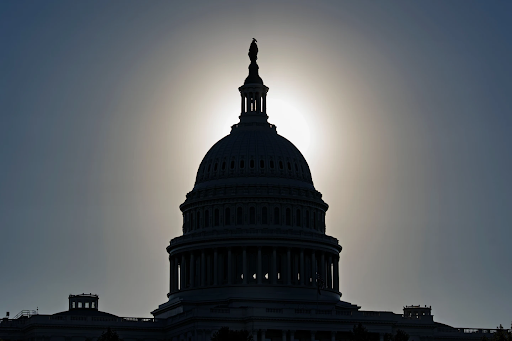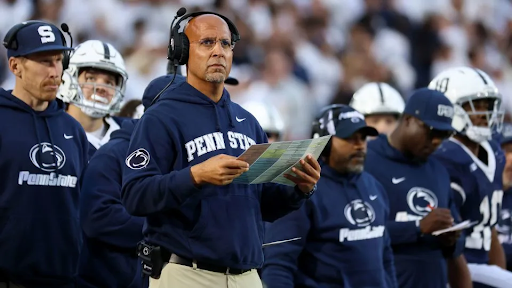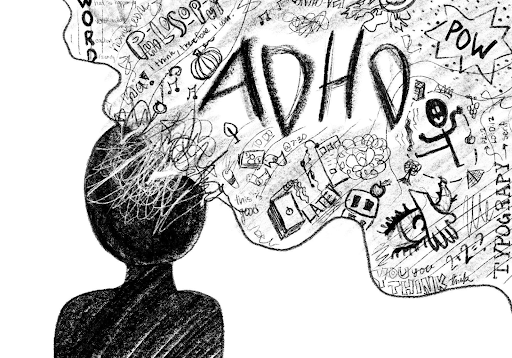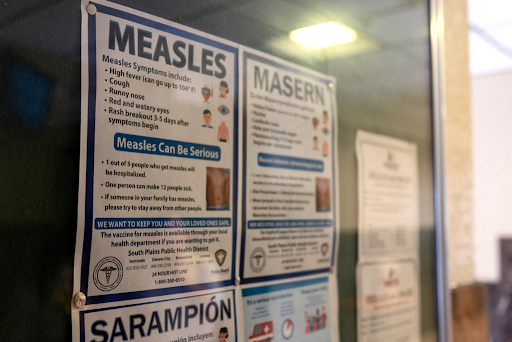The United States Government indefinitely shut down in the early hours of Wednesday, Oct. 1, 2025. The situation is slightly convoluted, and contains many details that are quite unprecedented, so it is understandable that many citizens may not know exactly why the shutdown occurred, or what it entails. However, understanding the basics of a government shutdown is important, as it highlights the unusual circumstances that have spiraled into the one currently happening.
A government shutdown occurs when the government is unable to secure funding for the following fiscal year by the end of the current one. That deadline lies on Sept. 30 of any given calendar year. According to Salud Carbajal, this is typically a result of Congress failing to come to a consensus on and pass an appropriations bill–a bill that gives the government the agency to direct money from the U.S. Treasury to specific purposes and agencies–before the deadline. As the bill remains stuck within the bounds of a divided Congress, the government lacks the ability to use any of the money in the U.S. Treasury. This essentially means that any agency or organization that runs off of funding from the government, such as the Departments of Labor, Health and Human Services, Homeland Security, etc. will no longer receive funding, and functions that rely on said funding will thereby be put on hold. As stated by USAFacts, there are certain functions that are legally exempt from stopping function, such as Medicaid, Medicare, Food Stamps, FAFSA, etc., though they may function at a slower pace than normal. Federal employees face the brunt of the negative effects of a government shutdown; many workers are placed on furlough, which is an unpaid leave of absence granted to federal employees in the midst of a shutdown. Furloughed employees are typically set to return to work with backpay once the shutdown ends. Not every federal employee is furloughed, however; essential workers, such as air traffic controllers, disaster aid, and law enforcement, are required to continue working without guaranteed pay.
The 2025 government shutdown occurred for the exact reason detailed above: Congress failed to pass an appropriations bill before Sept. 30. As stated by BBC, The House was split in a budgeting dispute, in which the Democrats were demanding a reversal of President Trump’s cuts to Medicaid, along with policies that would ensure cheaper healthcare for American citizens. Republicans were firmly against these demands, which led to a standstill in Congress.
Though these circumstances are nothing new, this shutdown is unique in the way the executive branch has been treating it. According to Reuters, the Trump Administration has issued up to 4200 lay-off orders have been ordered across about seven different departments, including Health and Human Services and the Treasury. Furloughed federal employees is standard; layoffs in this volume, however, are completely unprecedented. According to the New York Times, President Trump has been threatening the issuing of mass layoffs since before the shutdown even officially began, stating that his administration would likely be targeting “Democratic programs”, many of which will “never open again”. Despite these threats, Trump has not exactly taken full credit for these layoffs, still opting to call them “Democrat-oriented”.
This shutdown did not come out of nowhere. In fact, it has been on the forecast for several weeks leading up to the end of the 2025 fiscal year. In early-mid September 2025, a bill was proposed that would continue to fund the government until Nov. 21 while Democrats and Republicans continued to work out their differences regarding the appropriations bill at hand. This bill was called the Stopgap Bill. Although this proposal passed in the House, the Senate knocked it down with a 44-48 vote. Following the failure of the Stopgap bill, Democrats proposed their own deadline extension, which would both fund the government until the end of October, and provide the healthcare benefits that they have been so firmly standing for, as stated by NPR.
Since the Government shut down, there has been a blame-game at play within all branches of the U.S. government. Republicans have been firm in the stance that the House Democrats have acted selfishly in refusing to pass the appropriations and Stopgap bills. According to NPR, House Speaker Mike Johnson stated that Democrats construed the Stopgap bill into a “partisan exercise”, going on to state that in choosing to vote against the “clean, completely non-partisan” Stopgap bill, they were “choosing to shut down the government”.
As is customary, many government websites now have a message at the top of the page stating that the government has shut down, and how it will be affecting their services. However, many users have been thrown off by the contents of certain websites’ messages. For example, the website for the U.S. The Department of Treasury’s message states, “The radical left has chosen to shut down the United States government in the name of reckless spending and obstructionism. As a result, the U.S. Department of the Treasury’s websites will only be sporadically updated until this shutdown concludes.” Many netizens feel that this message, and the ones in its like, are inappropriate and border-line propaganda. NPR stated that experts feel that these statements may violate some federal ethics laws.
The shutdown will end once an agreement is made within Congress on an appropriations bill for the 2026 fiscal year. It is unsure, however, how this agreement will come about. Considering the current division within Congress, and the president’s lack of mediation, many are worried that this shutdown will measure in lengths that will change that of the 35-day 2018-2019 shutdown, which is currently the longest shutdown noted in American history. There are a lot of different roads that this shutdown could take, and only time will tell which one it will choose.




















